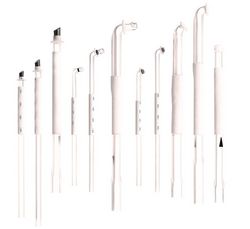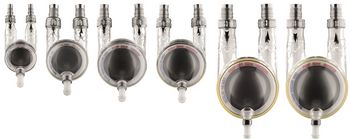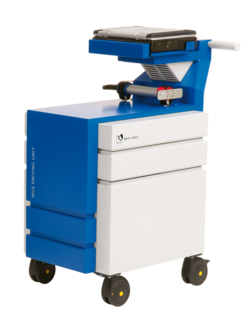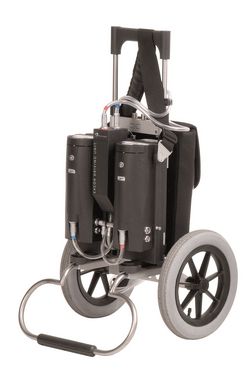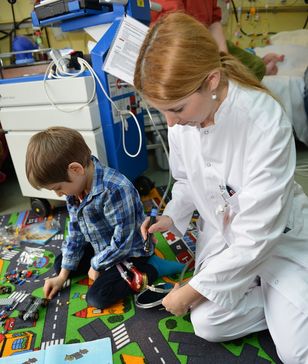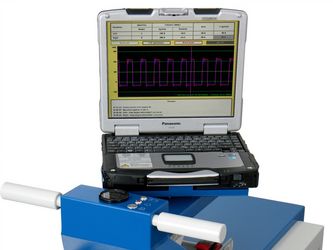The EXCOR® Pediatric system comprises the following components, that optimally match with one another and have proven successful in practice:
Silicone Cannulae
Our EXCOR® cannulae are made by hand from the purest medical silicone. In order to optimally supply patients, the cannula range includes various types and sizes of cannulae with the following features:
- Highest level of biocompatibility
- Customization to diverse anatomical conditions through various adapted diameters, lengths, angles and tip styles
- In the case of arterial and atrial cannulae: flexible metal reinforcement for adaptation to the individual anatomy
- Velour-coated suture ring, developed for a fast and safe anastomosis
- Good ingrowth of the cannula to the transcutaneous exit site thanks to the velour sheathing
Blood pumps
The EXCOR® Pediatric range includes blood pumps of various sizes, which are optimally suited to patients’ needs. From newborns to adolescents, patients of all ages can thus be supplied. Our blood pumps boast the following features:
- Different sizes available: 10, 15, 25, 30, 50 and 60 ml pump volumes
- Transparent polyurethane casing allows for visual inspection: pump filling and deposits can be detected
- Flexible triple-layer membrane for a high degree of safety; graphite powder between the membrane layers minimizes friction
- Ultra-smooth, flow-optimized blood contact surfaces with CARMEDA® BioActive Surface* coating for the best possible blood compatibility
- Safe de-airing through de-airing port
- Blood pumps with tri-leaflet valves made of polyurethane and blood pumps with bileaflet valves made of carbon
The EXCOR® blood pumps are connected to the heart or the vessels near the heart using cannulae. Following implantation, they are initially operated by the stationary pneumatic driving unit Ikus. Individual parameter settings are recorded on the driving unit for each patient in order to generate a pulsatile movement of the blood pump membrane. In this manner, support of the heart function can be achieved. Following mobilization, there is an option – for patients who are supplied with a 60 ml blood pump – to switch to the driving system Excor mobil.
Stationary driving unit Ikus
The Ikus driving unit is designed specifically for stationary use with EXCOR® blood pumps. As a high-performing all-rounder, the Ikus covers all areas of application:
- Pump rate, operating mode, driving pressure variable within wide limits
- Biventricular operation in synchronous mode, asynchronous mode or with independent control of the pumps
- Laptop with permanently installed monitor program for system configuration and monitoring
- High degree of safety due to multiple redundancy
- Automatic 30-minute battery power supply in the event of mains power failure
- Patient transport within the hospital while in battery operation
- Acoustic and visual alarms
- Plain text messages in the monitor program
- Comprehensive system status information at a glance
Mobile driving unit Excor mobil
The mobilization of young patients is important to their well-being. For adolescents with a weight starting at approximately 40 to 50 kg, the use of blood pumps starting at 60 ml can be considered. A battery-supplied Excor mobil driving unit can be used with these blood pumps. It enables mobility over several hours independent of the mains current.
- Optimal operating point within pre-set limits
- Synchronous pump with simultaneous pressure build-up comparable to natural heart contractions
- Lightweight
- Acoustic and visual alarms in the event of faults
- Two rechargeable batteries and two additional backup rechargeable batteries for several hours of mains-free operation
- Clear display on each battery: charge level is displayed
- Emergency batteries in the drives for additional safety
- Modular construction allows the patient to replace components
